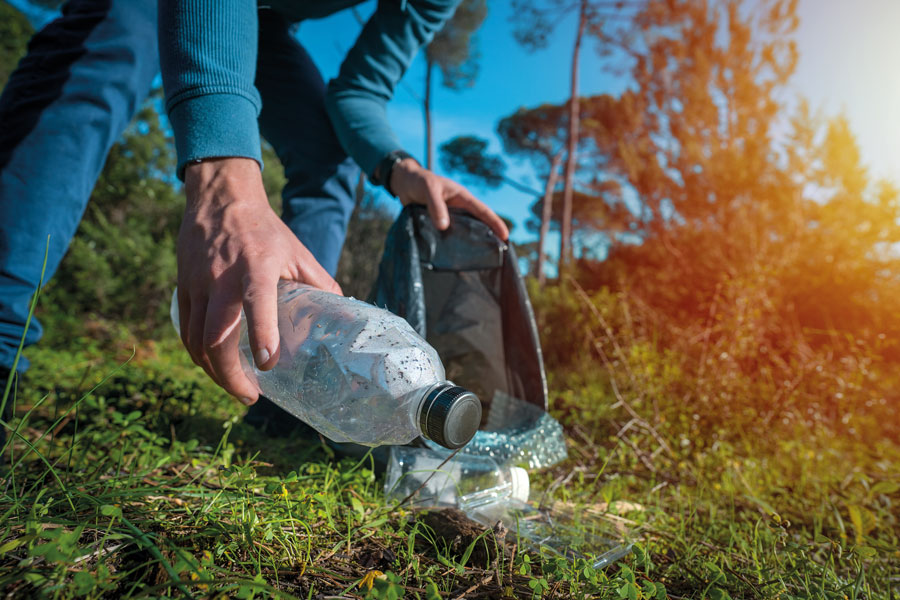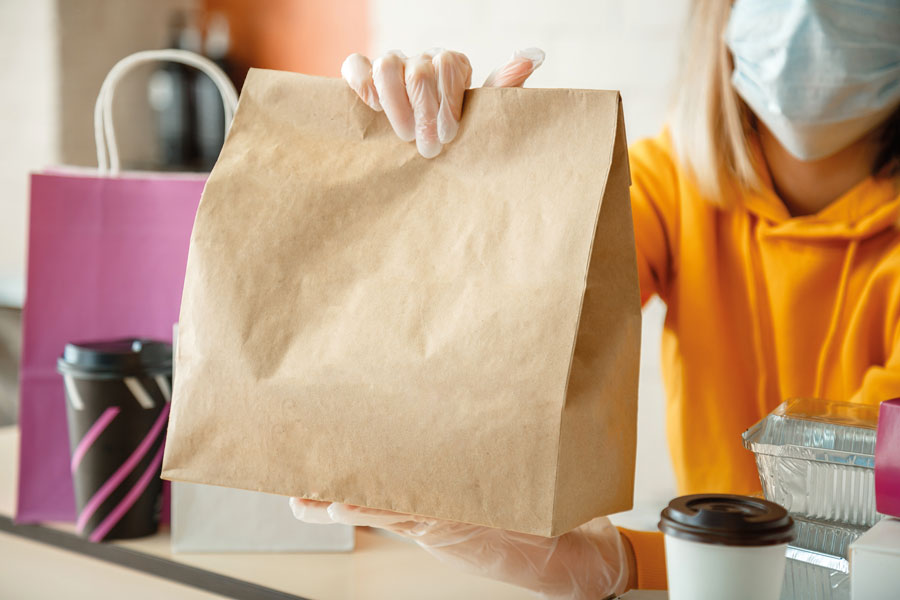With lockdowns having a huge effect on the food service sector, consumer routines and eating habits have inevitably had to change. Alastair Cupper from allmanhall, an independently owned food procurement consultancy, considers whether these changes are here for the long-term, or whether the food trends that emerged through the lockdown were just a fad.
Comfort cooking
At the height of lockdown there was a huge focus on home cooking and baking as flour sold out and people turned to the kitchen for a source of entertainment, searching online for bread, pizza dough and scone recipes.
As the BBC reported, supermarkets such as Waitrose, the Co-op and Tesco saw upward trends in the sales of dessert favourites such as rice pudding, custard powder, jelly and trifle. There was also an increase in sales for longer-life items including tinned fruit and vegetables, jarred pickles, tuna, spam and other tinned meats, and long-life milk. Whilst consumers may keep up their new-found cooking skills, it seems likely that the popularity of somewhat nostalgic tinned goods is a passing rather than lasting trend, driven more by the uncertainty of the lockdown period.
Functional foods
Whilst comfort and indulgence may be a passing trend, the focus on health and well-being is one that seems likely to be a lasting change. Food products that boost immunity and have wellness properties are increasing in popularity as people pay more attention to their health and the goodness of their food.
Balancing work and the general day-to-day to now include the re-opening of gyms and leisure facilities, there is less time for the leisurely food preparation that we saw in the early lockdowns and instead the focus will be on convenience. With an array of products promoting probiotic, antioxidant and superfood qualities, new launches such as cold-pressed juices and immune support shots are consistent across the market.
We are even seeing the trend extend into the drinks industry, with launches of alcoholic versions of healthier drinks such as hard seltzer (alcohol and carbonated water) and hard kombucha – an alcoholic fermented cold tea. Yet there also seems to be a particular focus on the health benefits of raw ingredients such as ginger and turmeric. We may view this as a more lasting trend, particularly when looking at well-being not only in terms of our own bodies, but as a much larger scope of the environment and the traceability of where our food comes from.
No more plastic
Whether it is classified as a trend or as more of a growing sense of awareness and accountability, the topic of sustainability and our planet is a huge focus for the food industry and consumers alike. With every one of us having a responsibility to step up and do our part, many will be looking for guilt-free purchasing whilst understanding the story of where their food comes from and how it was made into the end product. As a visible change, the reduction of plastic and packaging waste is an ongoing process with manufacturers looking for ways to reduce their environmental footprint. Many drinks companies are actively looking at the option of cans versus plastic bottles.

Transportable eating
Since last summer we have become used to eating and drinking outside as lockdown measures have restricted meeting friends and family in our homes. Whether in a park or a garden, the idea of food that is easy to serve and transport is a familiar concept. We have seen growth in the range of pre-mixed cocktails and spirits aimed at outdoor gatherings. And with picnics, barbecues and staycations lined up for summer, it is likely this is a trend that will last throughout the year.
Grab and go
Within the food service sector, an emerging trend from the pandemic has been the need for more grab and go food options. With businesses adapting to takeaway methods, there has been no other alternative than to offer pre-packaged products. Yet reducing waste food packaging is key within the food service sector and so whilst grab and go is necessary, it is important that businesses are mindful of packaging choices.
As hand sanitising is encouraged and customers look for reassurance that every measure is taken to reduce the spread of Covid-19, it could be likely that pre-packaged foods and meal options will still be available, even as the food service industry resumes. That said, many are looking forward to enjoying the social experience of eating-in after such a long time and it is possible that as confidences return and lockdown eases so will the need for such a focus on takeaway meals.
Subscription service
As hospitality and the food sector returns to normal service, there will be a desire to drive business and make up the sales that have been missed over the past months. From looking to upsell on a drink or meal by adding a sweet treat or dessert, the idea of ‘buy now, eat later’ may become more apparent. We are familiar with the concept of subscription services from those such as Netflix, Gousto and Hello Fresh, all of which offer a product for a monthly fee; however, this is starting to emerge in everyday food service too.
Pret a Manger’s YourPret Barista coffee subscription offers up to five drinks a day for a fee of £20 a month, with choice from their organic coffees, teas, hot chocolates, smoothies, frappes and iced coffees. Leon also has a subscription offer, charging £15 a month for unlimited coffee, or £6 a month to enjoy 30% off all drinks, cakes and vegan dishes.
The food trends of 2021 - whether passing or lasting - have certainly been influenced by the national lockdowns we have experienced since the beginning of last year. Yet some, such as the conscious move towards making more sustainable choices, are perhaps less trend-driven and more movements that have been slowly building momentum. There are trends that we will be happy to put behind us, but others that will continue to develop and will be seen as a lasting change on the way we sell, serve and consume food and drink.

